Allergies and holistic health
 Allergy relief without drugs is a natural, or holistic, approach to your health. Allergies are the immune system’s reaction to things in the environment that are normally safe to others but can be deadly to others. Exposure to the chemical that produces an allergy (allergen) can cause a variety of reactions. Sneezing, itchy skin, or a runny/blocked nose can all lead to a severe anaphylactic reaction, in which the lining of the throat and mouth swells. If not addressed immediately, the person will be unable to breathe. Unfortunately, in extreme circumstances, this can result in death (1).
Allergy relief without drugs is a natural, or holistic, approach to your health. Allergies are the immune system’s reaction to things in the environment that are normally safe to others but can be deadly to others. Exposure to the chemical that produces an allergy (allergen) can cause a variety of reactions. Sneezing, itchy skin, or a runny/blocked nose can all lead to a severe anaphylactic reaction, in which the lining of the throat and mouth swells. If not addressed immediately, the person will be unable to breathe. Unfortunately, in extreme circumstances, this can result in death (1).
For another example of a drug free approach to health, check out this article on how people can use herbs instead of drugs to manage anxiety.
What are the 10 most common allergies?
- Pollen. …
- Mold. …
- Dust mites. …
- Medications. …
- Latex. …
- Insect stings. …
- Cockroaches. …
- Perfumes and household chemicals. People who are sensitive to chemical scents found in perfumes, air fresheners, room sprays, and other household chemicals may have an allergic reaction when exposed to these products.
Pollen and Hay Fever
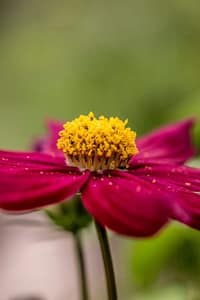
Hay fever, also known as rhinitis in medical terms, is one of the most frequent types of allergy. Pollen from flowers and grasses causes this reaction. Inflammation of the nasal membranes ensues. A runny nose, sneezing, nasal congestion, dry throat, sore eyes, and a cold-like feeling are some of the symptoms (7). Hay fever patients may find the summer months unbearable.
Hay fever affects up to a third of the world’s population. Four out of ten people have an allergy of some kind (2).
What Causes Hay Fever?
Hay fever is caused by an allergic reaction to allergens. This includes pollen, but also dust mites, or microscopic flecks of skin and saliva. They are shed by cats, dogs, and other animals with fur or feathers. They can be found outside or indoors (pet dander)
How Can I Avoid Hay Fever?
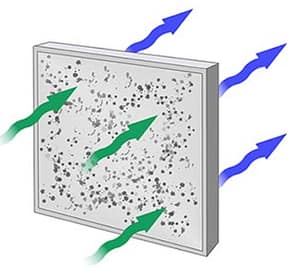
Another technique of prevention is to wash your hands and clothes after being outside. To avoid triggering an allergic reaction, use a gentle soap with no fragrances or additives. Detergents should be avoided. They can irritate your skin and trigger an allergic reaction. Lemon juice and vinegar are excellent natural cleaning solutions.
If your pollen allergy is severe, you may want to invest in a decent quality mask. It will prevent you from inhaling fine pollen particles. You should also wear this when sweeping indoors, as vacuuming can blow pollen particles around your house.
Natural Plant Therapy for Hayfever
A natural plant therapy that decreases histamine production is butterbur oil extract or tablet supplements (8). Pycnogenol pine bark extract is another natural medicine that relieves the symptoms of hay fever in a similar way (9).
Timothy Grass (Phleum pratense) is a well-known plant-based treatment for grass pollen-induced hay fever. This plant’s pollen is used to make a therapy that is administered under the tongue to alleviate hay fever symptoms. It’s also possible to inject it under the skin (10).
Which are Friendly Allergy-free Flowers?
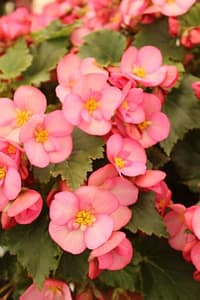
- Begonia. These free-flowering plants are in just about every shady garden and tend to shed little pollen. …
- Bougainvillea. The beautiful “flowers” of a bougainvillea are actually the bracts surrounding the flowers. …
- Camellia. …
- Geranium. …
- Petunia.
What Are the Most Common Food Allergies?
 Here are the eight most common food allergies.
Here are the eight most common food allergies.
- Cow’s milk. An allergy to cow’s milk is most often seen in babies and young children ( 9 ). …
- Eggs. An egg allergy is the second most common cause of food allergy in children ( 14 ). …
- Tree nuts. …
- Peanuts. …
- Shellfish. …
- Wheat. …
- Soy. …
- Fish.
Eggs, milk, wheat, peanuts, almonds, soy, fish, and shellfish are among the foods that induce allergic responses. Allergies can be triggered by pollen, mold, dust mites, and even some insects.
Food allergies do not affect everyone in the same way. A food intolerance is a diminished reactivity to a food. Although the symptoms are generally lesser, they can still cause discomfort and anguish. Stomach pain, irritable bowel syndrome, itching rashes, headaches, and migraines are some of the symptoms (3). Whether triggered by food or pollen, these symptoms are caused by the body’s production of histamines and leukotrienes (4).
When it comes to food allergies and intolerances, the best defense is to be proactive. Avoid eating the food and to limit your exposure to the allergen as much as possible.
Read food labels carefully because even trace amounts of an allergen might cause an allergic reaction. Most food labels now prominently display allergens (5), making it easy to spot components that will cause you to react.
Gluten
Be aware that the same food may go by multiple different names. Gluten in wheat, for example, is a common source of allergic responses. Gluten can also be present in rye, couscous, spelt, and a variety of thickeners (6). As a result, it’s critical that you conduct thorough research. It has the potential to save your life.
Natural Practices to Avoid Acquiring Allergies
The best method to avoid acquiring allergies and intolerances is to eat a balanced diet. It includes a wide variety of vegetables, nuts, fruit, and seafood starting in childhood. Some kids are allergic to eggs, specifically albumin (white). The good news is that allergies are frequently overcome.
Vitamin C is a fantastic idea to take on a regular basis to help your immune system. It may not be able to prevent an allergic reaction. However i it can help to reduce the severity of the symptoms. A daily intake of 500 mg to 2000 mg should enough (11). Eat plenty of Vitamin C-rich fruits and vegetables in addition to the supplement. Oranges, lemons, kiwi fruit, strawberries, and broccoli are among these foods. Sweet potatoes, red peppers, and blackcurrants are also high in vitamin C.
Plenty of Fluids
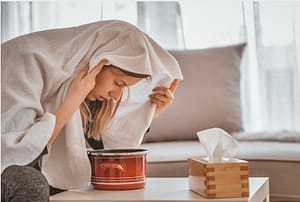
A stuffy nose might be relieved by inhaling steam. To make steam, boil a pot of water or use a humidifier. Then sit over the steam for a while until you feel better. Peppermint essential oil can boost the benefits while also reducing asthma symptoms (13). Alternatively, flood the bathroom with steam by running a hot shower or bath and sitting in it until your nose is clear.
Acupuncture

Probiotics
Probiotics (good bacteria) boost the immune system, which can aid with allergy symptoms. Foods that contain probiotics include yogurt, tempeh, kimchi, and sauerkraut. Lactobacillus GG and Bifidobacterium lactis (15). These are available in an easy-to-swallow capsule, and are the most effective probiotics.
Spirulina
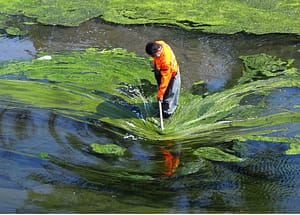
The photo is from a spirulina biorefinery. The spirulina comes in many retail forms, from pills to powder and everything in between.
Honey
Honey is a natural hay fever remedy. It includes pollen, which can help to alleviate allergy symptoms by desensitizing you to pollen over time. Some people feel better right away after consuming honey, but it may take several weeks or months for them to see a difference. According to anecdotal evidence, eating local, organic honey is preferable to eating regular honey (17).
Quercetin
Quercetin is a naturally occurring antioxidant that is frequently used in over-the-counter antihistamine medications. It is found in blueberries, bilberries, apples, onions, red grapes, and leafy green vegetables. Therefore if you suffer from allergies, include these foods in your diet (18).
How do you flush allergens out of your system?
There are many ways to flush allergens out of your system. One way is to drink plenty of fluids, especially water )see above). This will help to flush the allergens out of your system.
Does drinking water reduce allergies?
 Drink enough fluids to stay hydrated during allergy season. Dehydration causes the body to produce more histamine, which causes allergies, according to studies.
Drink enough fluids to stay hydrated during allergy season. Dehydration causes the body to produce more histamine, which causes allergies, according to studies.You can also try using a neti pot to rinse the nasal passages and sinuses. This will help to remove any allergens that may be causing your symptoms.
What is a Neti Pot?
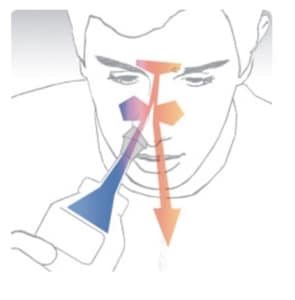
A neti pot is a device that pushes a stream of saline solution through your nasal passages, cleaning away mucus and allergies that have built up. Why saline rather than plain water? It protects your nasal passage from inflammation.
There are a variety of nasal irrigation products on the market. Go online to see what might be a fit for you.
Springtime and Natural Treatment of Allergies
Springtime is in the air, and with it comes the dreaded pollen allergies. If you’re like most people, you’ll turn to over-the-counter drugs to help relieve your symptoms. But what if there were natural ways to get relief from allergies? Here are a few tips:
1. Drink plenty of fluids. dehydration can worsen allergy symptoms.
2. Stay indoors when the pollen count is high.
3. Keep windows and doors closed to keep pollen out of your home.
4. Wear sunglasses and a wide-brimmed hat when outdoors to keep pollen out of your eyes.
5. Rinse your nasal passages with salt water or saline solution to help relieve congestion.
6. Consider using a humidifier to add moisture to the air, which can help reduce congestion and irritation caused by allergens.
To Sum Up
You now have a few options for dealing with allergy symptoms and allergies. The message is that prevention is better than cure. Therefore, include the foods listed above into your diet and that will give you a fantastic start. We encourage you to check out the articles referenced in the writing of this report for more details. It is always best to make an informed decision.
References
- Anaphylaxis Signs and Symptoms https://www.anaphylaxis.org.uk/what-is-anaphylaxis/patient-signs-and-symptoms/?gclid=CjwKCAiAiKuOBhBQEiwAId_sKxjs82byXiCXu5Or_ew271-fhAxATWaHfA8MoIOTWJ1bOgkHmSi4YxoCIn8QAvD_BwE
- Allergy Statistics https://www.aaaai.org/About/News/For-Media/Allergy-Statistics
- Food intolerance https://www.allergyuk.org/resources/food-intolerance/
- Differential inhibition of inflammatory effector functions by petasin, isopetasin and neopetasin in human eosinophils https://pubmed.ncbi.nlm.nih.gov/11529903/
- Food Allergies https://www.fda.gov/food/food-labeling-nutrition/food-allergies
- How to Identify Gluten on Food Labels https://www.verywellhealth.com/how-to-identify-gluten-on-food-labels-562666
- Allergic Rhinitis and Hay Fever Factsheet https://www.allergyuk.org/resources/allergic-rhinitis-and-hay-fever-fact-sheet/
- Differential inhibition of inflammatory effector functions by petasin, isopetasin and neopetasin in human eosinophils https://pubmed.ncbi.nlm.nih.gov/11529903/
- Inhibitory Effect of Pycnogenol® on Airway Inflammation in Ovalbumin-Induced Allergic Rhinitis https://www.ncbi.nlm.nih.gov/pmc/articles/PMC5156464/
- Phleum pratense alone is sufficient for allergen-specific immunotherapy against allergy to Pooideae grass pollens https://pubmed.ncbi.nlm.nih.gov/19222498/
- Intravenous vitamin C in the treatment of allergies: an interim subgroup analysis of a long-term observational study https://journals.sagepub.com/doi/pdf/10.1177/0300060518777044
- Nasal irrigation as an adjunctive treatment in allergic rhinitis: a systematic review and meta-analysis https://pubmed.ncbi.nlm.nih.gov/23168142/
- The anti-inflammatory activity of L-menthol compared to mint oil in human monocytes in vitro: a novel perspective for its therapeutic use in inflammatory diseases https://pubmed.ncbi.nlm.nih.gov/9889172/
- Acupuncture in patients with seasonal allergic rhinitis: a randomized trial https://pubmed.ncbi.nlm.nih.gov/23420231/
- Treatment of Allergic Rhinitis with Probiotics: An Alternative Approach https://www.ncbi.nlm.nih.gov/pmc/articles/PMC3784923/
- Effects of a Spirulina-based dietary supplement on cytokine production from allergic rhinitis patients https://pubmed.ncbi.nlm.nih.gov/15857205/
- Ingestion of honey improves the symptoms of allergic rhinitis: evidence from a randomized placebo-controlled trial in the East coast of Peninsular Malaysia https://pubmed.ncbi.nlm.nih.gov/24188941/
- Quercetin and Its Anti-Allergic Immune Response https://pubmed.ncbi.nlm.nih.gov/27187333/
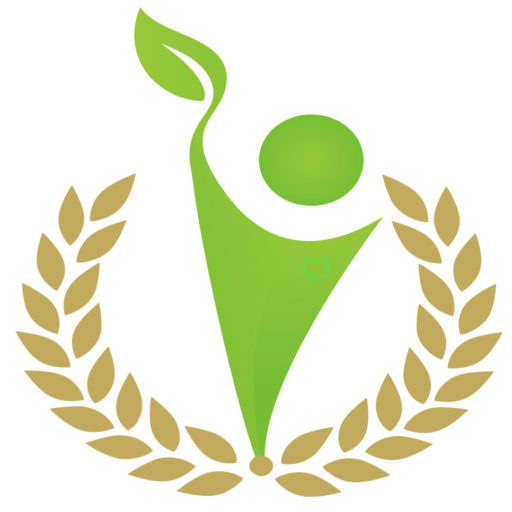

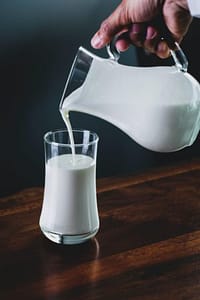 Here are the eight most common food allergies.
Here are the eight most common food allergies.